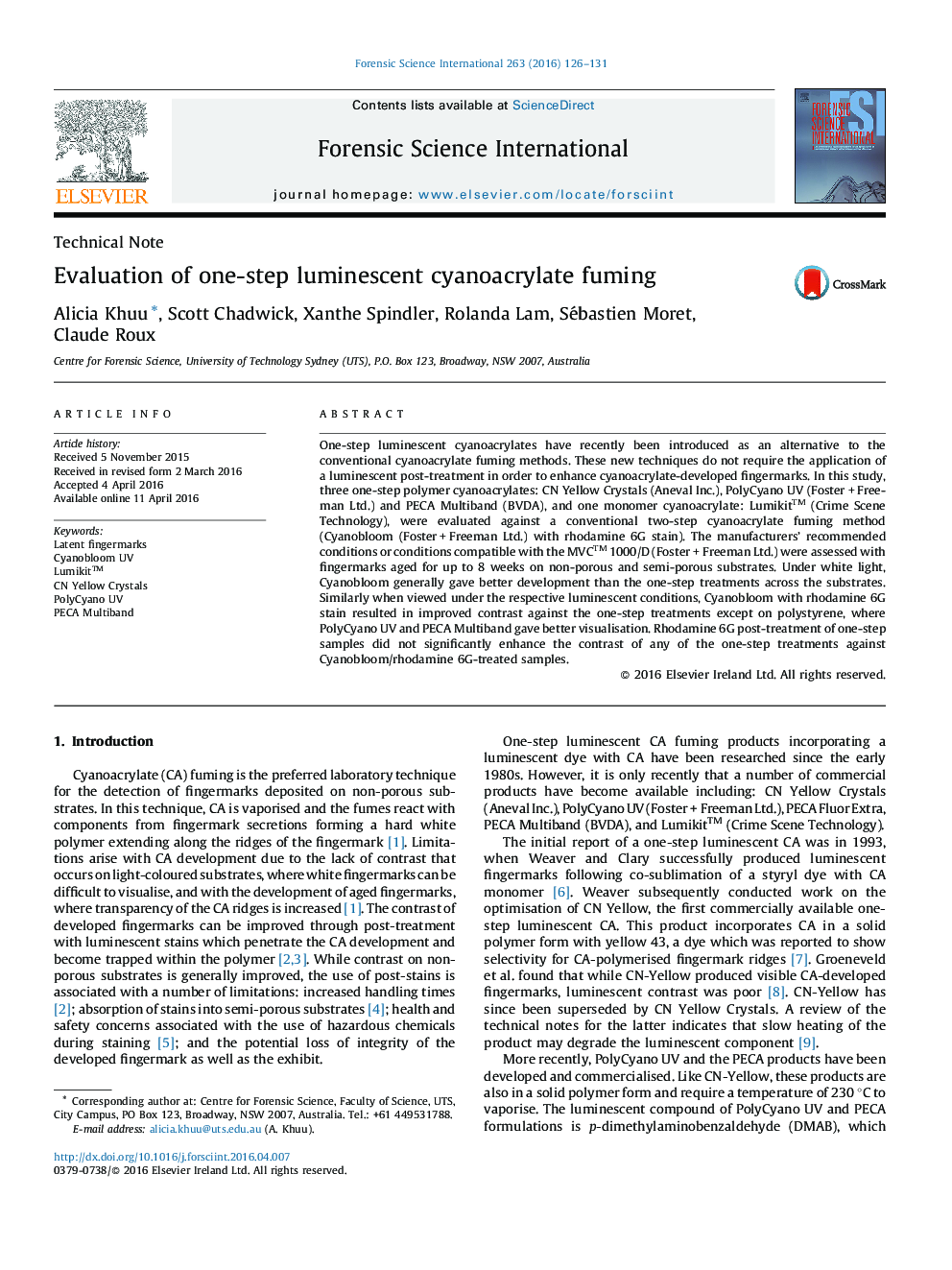| Article ID | Journal | Published Year | Pages | File Type |
|---|---|---|---|---|
| 95154 | Forensic Science International | 2016 | 6 Pages |
•Conventional cyanoacrylate typically gave better development on fresher fingermarks.•Rhodamine 6G gave superior luminescence compared to that of one-step treatments.•Fingermarks on polystyrene surfaces are better visualised with a one-step treatment.
One-step luminescent cyanoacrylates have recently been introduced as an alternative to the conventional cyanoacrylate fuming methods. These new techniques do not require the application of a luminescent post-treatment in order to enhance cyanoacrylate-developed fingermarks. In this study, three one-step polymer cyanoacrylates: CN Yellow Crystals (Aneval Inc.), PolyCyano UV (Foster + Freeman Ltd.) and PECA Multiband (BVDA), and one monomer cyanoacrylate: Lumikit™ (Crime Scene Technology), were evaluated against a conventional two-step cyanoacrylate fuming method (Cyanobloom (Foster + Freeman Ltd.) with rhodamine 6G stain). The manufacturers’ recommended conditions or conditions compatible with the MVC™ 1000/D (Foster + Freeman Ltd.) were assessed with fingermarks aged for up to 8 weeks on non-porous and semi-porous substrates. Under white light, Cyanobloom generally gave better development than the one-step treatments across the substrates. Similarly when viewed under the respective luminescent conditions, Cyanobloom with rhodamine 6G stain resulted in improved contrast against the one-step treatments except on polystyrene, where PolyCyano UV and PECA Multiband gave better visualisation. Rhodamine 6G post-treatment of one-step samples did not significantly enhance the contrast of any of the one-step treatments against Cyanobloom/rhodamine 6G-treated samples.
